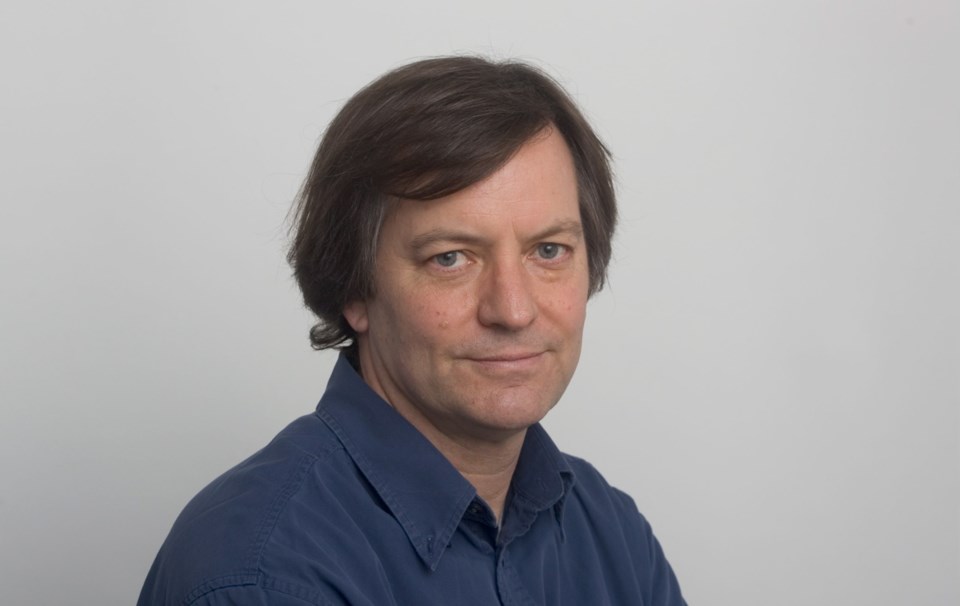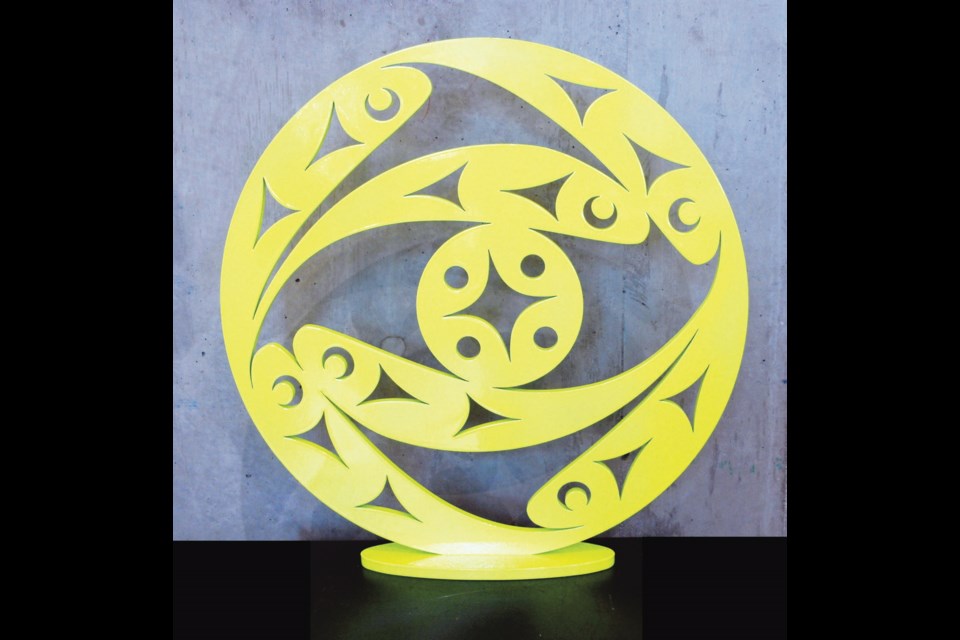 Of art traditions on this coast, that of the Coast Salish was subject to more colonial overlay than the more remote groups farther north.
Of art traditions on this coast, that of the Coast Salish was subject to more colonial overlay than the more remote groups farther north.
In the past generation, some heroic individuals — among them Charles Elliott, Floyd Joseph, John, Luke and Angela Marsden and the remarkable Susan Point — have retrieved the unique Coast Salish graphic language and breathed new life into it.
Unlike the “formline” styles of Haida and Kwakwaka’wakw carving and painting, the elements of Salish art are simpler, based on the circle, the crescent and the trigon. Northern styles were traditionally applied to the totem pole, the bentwood box and the carved frontlet, while Salish artists used their language to decorate simpler houseposts, basketry and a limited range of masks. The signature item of Coast Salish carving and design is the spindle whorl.
Spindle whorls were once an important functional object. Designed and carved by men, they were made for women to use in their spinning, and weaving. The whorl is a wooden disk that, mounted on a spindle, acts as a sort of flywheel counterweight in the spinning of either imported mountain-goat wool, or the hair of specially raised dogs.
The hole in the disk makes an unmoving centre, and the motifs carved around it are a dynamic centrifugal constellation. Ancient whorls in local museums have long been the object of close study by young artists. Alcheringa, in its continuing advocacy for native culture and the development of new talent, is hosting an exhibition of three fine young artists, focusing on the whorl shape and bearing the engaging title (R)evolving whorl(D).
The artists, all men and all local, have accepted the challenge to work in new media and to try new forms, and this exhibit is rich in experiment and personal evolution. The artists are lessLIE, Chris Paul and Dylan Thomas. The theme of the show offers a sensitive crossover to the circular, feminine imagery and, coincidentally, all three artists are fathers of young daughters.
At heart, lessLIE is a sort of conceptual artist. His self-made name gives evidence of his bold intervention in language and word play, and the title of this exhibition, parentheses and all, is his invention. lessLIE’s academic background and connections have taken Coast Salish art into a new arena, and his recent curatorship of the remarkable Urban Thunderbirds show at the Art Gallery of Greater Victoria turned a new page in Indigenous art.
Typical of lessLIE’s work are two large canvases, red circles on a black ground. Using closely matched tones, red on red and black on black, he insinuates barely visible motifs. I find his minimalism less than engaging, but when I understood that his little black-on-black whorl is a CD in a case, I began to get the message.
His white-on-white paper-cut spindle whorl, involving cast shadows, is more immediately attractive. A small etched-glass whorl with a “yin yang” motif, indicating the relation of male and female elements of his culture, is so appealing I didn’t immediately recognize it as his work at all.
Chris Paul has a growing reputation for water-jet-cut metal panels, most notably his Salish Sea piece standing near the Oak Bay Marina. In the current show, his steel disk cut out with a herring motif is a terrific design, taken to new realms with its neon yellow powder coating. An array of small, etched-glass discs is easy to love, but for Paul the real challenge has been the creation of his set of four carved whorl/masks.
Paul is, amazingly, allergic to cedar. Personally, he has pioneered sand-blasted cedar panels as a way to get his ideas across. He admits to being humbled by the work of wood carvers who have given their lives to the knife and chisel. Yet this time he has taken up the challenge.
“It’s not a small step to cross over,” he admitted recently. “It’s like a chasm there, to bring the skills up,” and to carve something he would feel proud to exhibit.
Working right up to the last moment, Paul created moon-like disks. An outer rim of natural cedar holds an inner ring of low-relief motifs, carved and delicately painted and radiant with energy. At the centre is a circular mask — a grandmother, usually — innovatively composed of Salish design motifs. This complex, low-relief carving is new territory for him, in both image and medium, and fulfils the promise of the exhibition, to inspire the artists to take their practice to new realms.
Dylan Thomas is the youngest of the three, and at a recent gathering spoke eloquently of the Greek inventor and mathematician Archimedes, with whom he shares a passion for geometry. Archimedes, he told us, was so consumed by his passion for drawing geometric figures that all practical matters seemed irrelevant. Thomas has spent years considering the geometry of circular motifs around the world, and in this show brings it all back home with the spindle whorl.
Graphic design is the centre of Thomas’s practice and, as a young artist, he is slowly finding his way, applying his hypnotic patterns to sand-blasted cedar and glass, and engraved silver. Mostly his designs appear as paint on canvas. Along with the meditative patterns he creates, his pastel colours take Salish art to places it has never been before.
Well-spoken, widely curious and with a sharp attention to detail, Dylan Thomas has a great future ahead.
This is not your average First Nations art show, and it repays careful study.
��
(R)evolving whorl(D) at Alcheringa Gallery, 621 Fort St., alcheringa-gallery.com, 250-393-8224, until Sept. 2.



